MercoPress. South Atlantic News Agency
Tag: Central Bank of Argentina
-
Tuesday, December 26th 2023 - 10:44 UTC
Argentina's BCRA planning larger-denomination bills
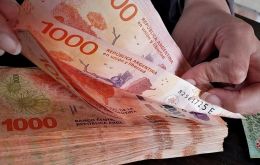
Argentina's Central Bank (BCRA) is entertaining the possibility of issuing AR$ 20,000 and 50,000 bills in a move to keep up with inflation and eliminate the need for large wads of banknotes for nearly every cash transaction.
-
Thursday, December 7th 2023 - 10:59 UTC
Milei reaches out to Elon Musk and confirms Central Bank head

Argentina's President-elect Javier Milei said Wednesday that he spoke “extensively” on the telephone with tycoon Elon Musk, who shall not be attending the Dec. 10 inauguration in Buenos Aires.
-
Wednesday, November 8th 2023 - 10:55 UTC
Argentina makes payment to IMF in yuan
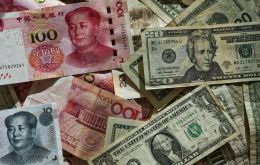
Argentina has complied with the payment of interests to the International Monetary Fund for US$ 790 million, it was reported Tuesday in Buenos Aires.
-
Wednesday, October 4th 2023 - 09:55 UTC
Argentina: “Blue” dollar hits new all-time high

The “blue” (a euphemism for “black market”) dollar rose AR$ 10 Tuesday and sold for AR$ 810, thus setting a new record, it was reported from Buenos Aires.
-
Thursday, July 13th 2023 - 10:56 UTC
Argentina: “Blue” dollar pierces AR$ 500 barrier
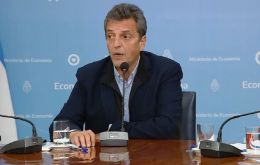
The “blue” (a euphemism for “black market”) dollar Wednesday pierced the AR$ $500 barrier and set a new record high, it was reported in Buenos Aires. Meanwhile, the official exchange rate also went up despite the Central Bank (BCRA) selling some of its reserves.
-
Saturday, July 8th 2023 - 11:05 UTC
Inflation projections better than a month ago in Argentina
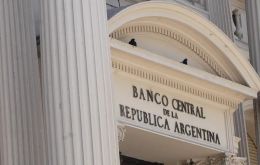
The Argentine Central Bank's (BCRA) monthly Market Expectations Survey (Relevamiento de Expectativas del Mercado - REM) for June released Friday forecasts inflation to reach 142.4% by the end of 2023. The study details the forecasts of institutions, companies, organizations, and specialists on the evolution of the main economic variables.
-
Friday, June 30th 2023 - 10:28 UTC
Argentina to pay the IMF with Chinese money
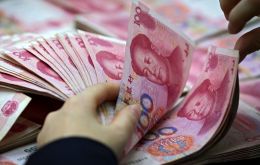
Argentine authorities Thursday announced that ”the payment of 2.7 billion dollars to the IMF corresponding to the second quarter will be made, partly in Special Drawing Rights (SDR) of the Treasury and partly with yuan, without using Central Bank reserves.”
-
Saturday, May 6th 2023 - 10:54 UTC
Central Bank report corrects Argentina's inflation projections upwards

According to the Argentine Central Bank's (BCRA) Market Expectations Survey (Relevamiento de Expectativas de Mercado - REM) report published Friday, the panel of economists issuing that document has made an upward correction to their inflation forecasts for 2023, placing it at 126.4%, or 16.4 percentage points above April's projections, while last month's Consumer Price Index (CPI) is believed to be of 7.5%. The National Institute of Statistics and Census (Indec) will release the official data on May 12.
-
Friday, April 28th 2023 - 11:15 UTC
“Blue” dollar keeps backtracking in Argentina
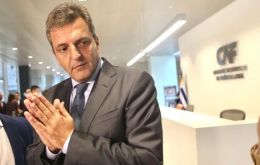
The “blue” (a euphemism for “black market”) dollar dropped to AR$ 467 Thursday after further announcements and measures from Argentine authorities, after reaching an intraday record of AR$ 497 on Tuesday. It is still an AR$ 72 peso (18.2%) increase for the month of April.
-
Saturday, April 22nd 2023 - 10:54 UTC
Argentina: How did the President's announcement hit the foreign exchange market?

President Alberto Fernández's announcement Friday that he would not seek reelection this year triggered the US dollar further up against the Argentine peso, reaching AR$437 / AR$442 (buy/sale) at the “blue” (a euphemism for “black market”) exchange rate. Meanwhile, the official rate stood at AR$217/AR$225 (buy/sale), for a gap of 102.26% between the two quotations.
